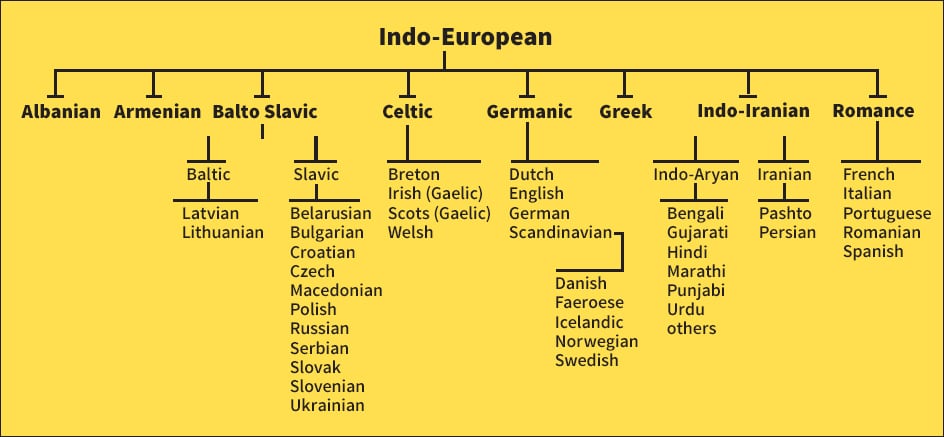Some Armenian Words That Sound (Almost) Like English… Or Not

As Indo-European languages, Armenian and English share vocabulary that comes from the depths of history, from the time when a common grandparent was supposed to have existed someplace in Eurasia around 3000 B.C. Proto-Indo-European (P.I.E.)—the reputed grandparent of all Indo-European languages, from Farsi to Spanish—has not been attested in any ancient document and has been reconstructed on the basis of language studies. For this reason, scholars use asterisks, as a convention, to represent any of its words. This is why we will actually find a cluster of stars below.
Armenian and English have in common, for example, the words “father” and “mother.” Although the latter look somehow different to their Armenian counterpart հայր (hayr) and մայր (mayr), there is no doubt that both share the same ancestors: P.I.E. *pǝter and *mater.
|
The replacement of *ter by yr (յր) in Armenian may look odd. Comparative linguistics has found out that most Indo-European languages have kept something closer to a *t, such as t, d, or th, to say “mother” or “father,” while it is only in Armenian where P.I.E. *t became y over a certain amount of time. Another example of this rule is seen in the word այրել (ayrel , “to burn”), whose root ayr comes from P.I.E. *ater.
It is not strange, then that Proto-Indo-European *p, after its division, yielded different sounds, such as a*f in Proto-Germanic and a*h in Proto-Armenian. This accounts for the relation between father and hayr (the first parts of mother and mayr are easy to relate). The same as its relatives, Dutch vader (it may well have inspired the name of the “dark father” of Star Wars, Darth Vader) and German vater, English father comes from their common parent, Proto-Germanic *fader.
This is not an isolated example. The oldest poem of Armenian literature, namely, the birth of Vahagn, god of storm, fire, and war, includes the following line in his physical description:
Նա հուր հեր ունէր (Na hoor her ooner, “Fiery hair had he”).
Today commonly used in poetic language, hoor (“fire,” hence “fiery”)—synonym to կրակ (grag)–has been or may have been the source for many proper and common nouns, such as the male names Հրաչեայ (Hrachya) and Հրայր (Hrayr), for instance, and standard words like հրշէջ (hrshech, “fireman”), հրաբուխ (hrapookh, “volcano”), and others. Both hoor and fire (< Proto-Germanic fōr) constitute another related pair, whose ultimate common source is P.I.E *puro.
Incidentally, someone might relate Armenian her and English hair; the latter is derived from Proto-Germanic *hera, which at its turn came from P.I.E. *k’er(s) (“stiff hair, bristle”):
- Both her and hair look alike and have the same meaning.
- Even though the standard Armenian word for “hair” is մազ (maz), we use her in compounds like շիկահեր (shigaher, “red-haired”) or հերակալ (heragal, “headband”).
However, this is an optical illusion. In the 1920s, Hrachia Adjarian had already stated in his etymological dictionary that the similitude between her—whose actual origin is unknown— and hair was just casual. Since then, it has been shown that the poem about Vahagn, where the word her is already present, reflected words and images belonging to the common Indo-European time (third millennium B.C.), probably long before the ancestors of the English language washed their . . . *hera.
The mysteries of language are still infinite.
